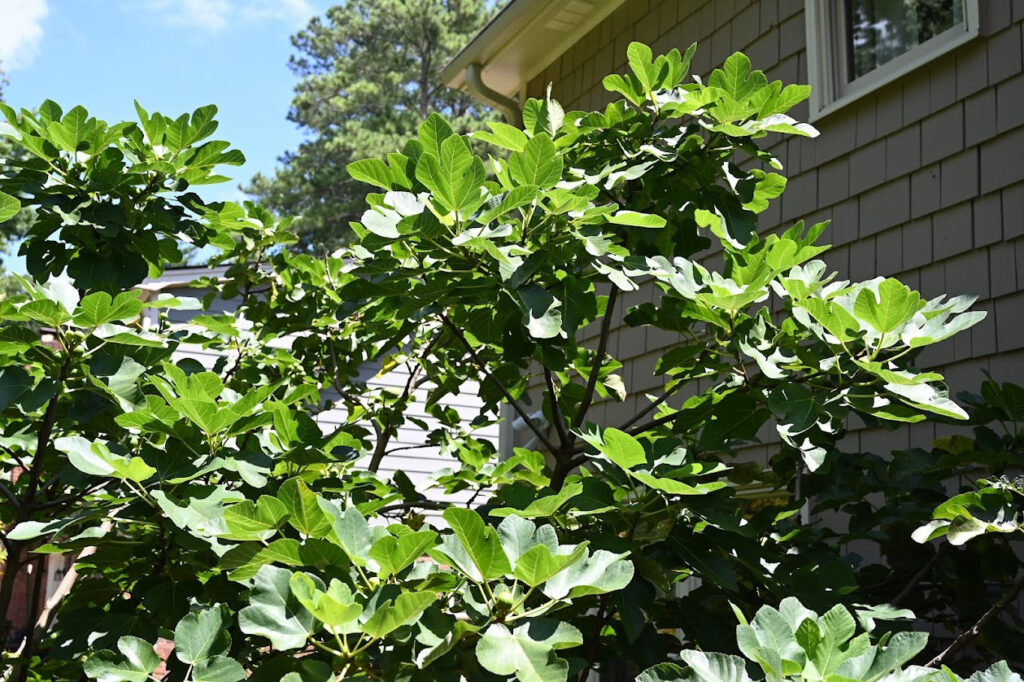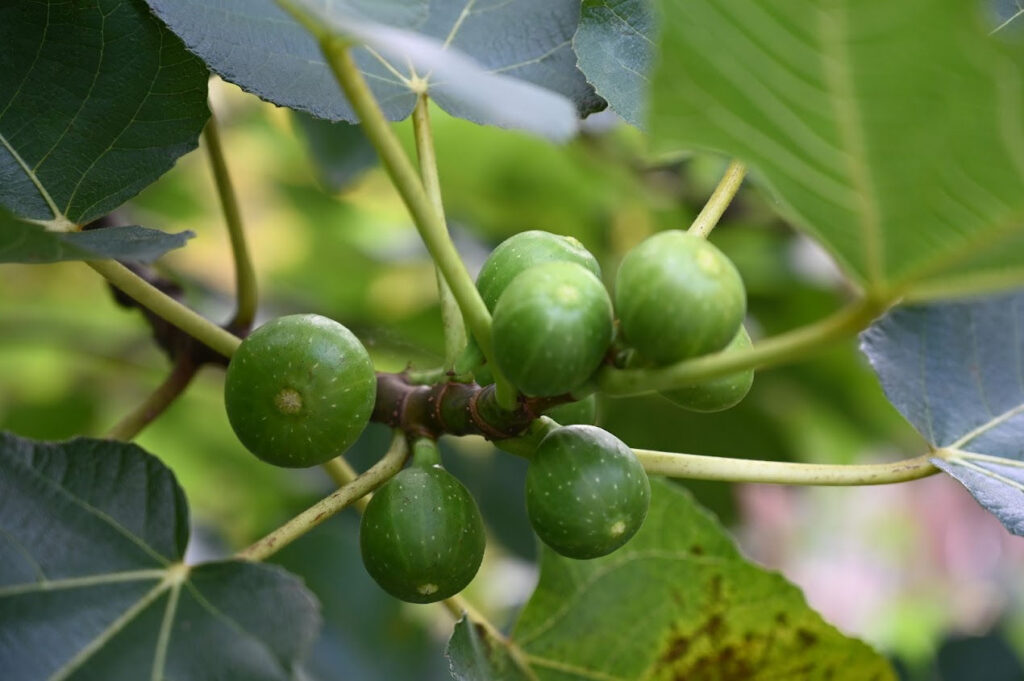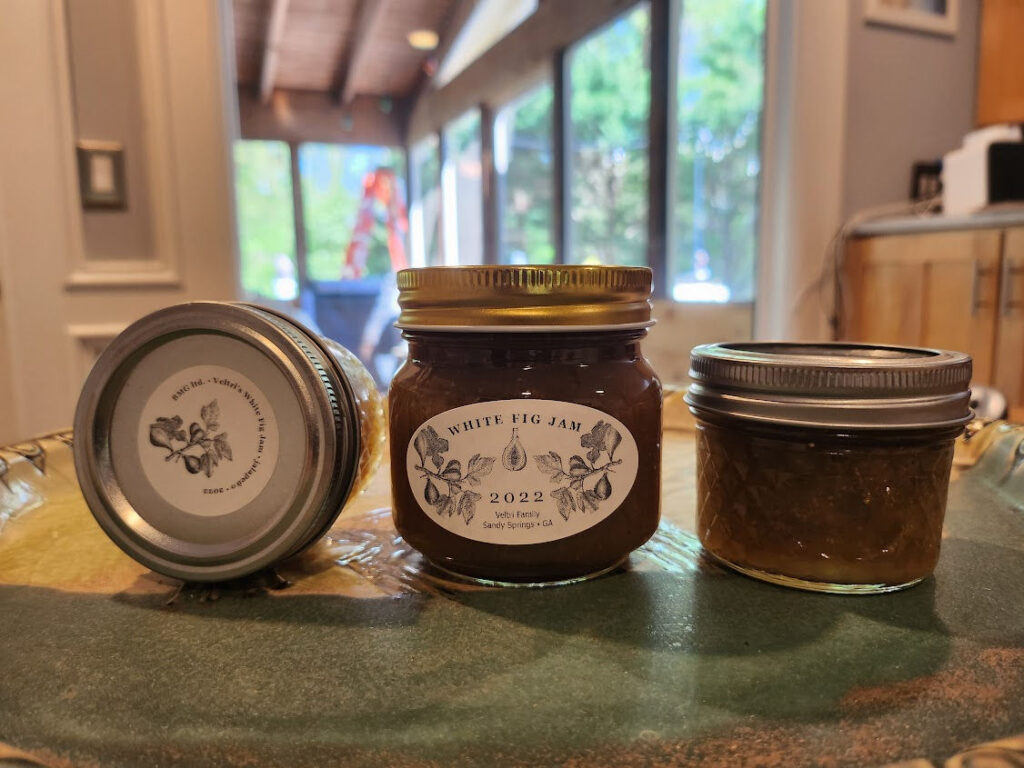by Jerry Veltri, Fulton County Master Gardener Extension Volunteer
This article is part of Garden Buzz, a series from Appen Media and the North Fulton Master Gardeners, where rotating columnists explore horticulture topics like herbs, insects, and wildlife conservation. Find all Garden Buzz articles here.
Every homeowner can benefit by having a fig tree as part of their landscape garden. There are several reasons to consider growing at least one tree in your garden area. The fig tree, steeped in history, is easy to start and maintain, provides a shady canopy from the hot summer sun and provides good tasting, nutritious fruit for your family and friends.

An attractive addition to your home landscape
Fig trees beautify your landscape from spring to late fall. These naturally fast-growing trees, located optimally in your landscape, will provide an eye-catching focal point in your yard. A typical tree can grow from 10 to 30+ feet and provide welcome relief as a natural shade to deck areas or near your home with its large, majestic leaves.
Easy to grow and maintain
Regardless of your expertise as a gardener, fig trees are relatively easy to grow. The Atlanta area’s warm, humid summers and mild winters are perfect for fig trees. They adapt well to our soil types and are able to withstand periods of drought, which makes them low maintenance throughout the year. In optimal conditions, the trees will grow significantly, and you may elect to prune yearly to allow easy access to all the fruit produced. It’s best to prune them when they are dormant in the late winter or early spring.
Easy to propagate
If you already have a tree in your yard or a friend/neighbor has one that you admire, you can easily start another by cutting a branch during growth and placing in a container or layering a branch on the ground until it creates its own roots.
Healthy and tasty fruit
An added benefit that enhances the natural beauty of this tree is that it can provide phenomenal and bountiful fruit during the summer and fall months with very little effort on your part. In the proper growing location, you can harvest multiple pounds of this sweet signature fruit. The fruit can be eaten fresh or used to make dried fruit and jam (my favorite). In a typical year, I was able to process over 100 jars of fig jam, even after allowing friends, neighbors, birds, squirrels, bees, wasps and other yard visitors to partake in the fruit from a single tree.


Getting started
For optimal outcomes and bountiful fruit production, it is recommended you plant the tree in an area with full sun and well-drained soil. It is recommended that you have the soil tested for nutrients through your local Extension office. While you have a plethora of types of fig trees to choose from, there are specific varieties that thrive in our area: Celeste, Concordia, Hardy Chicago and more. Check out the UGA Extension publication, “Home Garden Figs,” for a list of varieties recommended for Georgia. My favorite is Italian White, which produces large, light-skinned, sweet fruit. It is recommended that you select a plant from your local garden retailer that is self-pollinating, so you are not dependent on the microscopic wasp in the family Agaonidae to ensure proper fruit production.
Find an optimal location for your tree that is near your house (or wall) with southern exposure that will have plenty of morning and afternoon full light exposure. Fig trees thrive when they have a wall for structural support, as they are not a hardwood fruit tree. Alternatively, you can start your tree in a container while you determine the best location for your yard. Moreover, figs can be a container plant if you do not have the ability to plant in-ground or want to contain their growth. Here’s hoping you can FIGure it out.
Happy Gardening!
Learn More
- Home Garden Figs
- Pruning Woody Plants
- Propagating Fruit Plants
- Home Fruit Orchard Pruning Techniques
- Home Garden Series
About the Author

This week’s “Garden Buzz” features Sandy Springs resident Jerry Veltri, an active gardener in the Atlanta area for over 30 years. Jerry is a recent member of the UGA Extension Master Gardener Volunteer Program. He spends most of his time supporting Master Gardener Extension Volunteer efforts at Lost Corner Preserve.